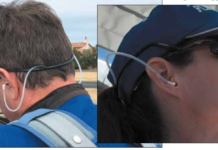Although Cirrus and Diamond appear to be going great guns in the new aircraft market, the industry overall remains moribund. Surprisingly, the twin market isn’t doing so badly. If single-engine sales catch cold when the economy sours, twin sales suffer a sneeze or two, not double pneumonia.
Case in point: 2000 was a moderately strong year for GA. Between them, stalwarts Cessna, Beechcraft/Raytheon and Piper sold 1339 piston singles that year, according to the General Aviation Manufacturers Association. In 2002, the three companies sold 777 singles, a decline of 42 percent.
Only Piper and Beechcraft currently sell mainstream piston twins. These two companies actually sold more twins in 2002 than in 2000, delivering 130 twins in 2002 versus 111 in 2000, carried forward mainly by New Pipers Seminole and Seneca. Thus far, 2003 looks dismal but twin sales may we’ll outperform the single-engine segment on a percentage basis, suggesting that the demographic which buys twins is less impacted by economic vagaries than those who buy singles.
That bodes we’ll for the Adam A500 because a market that can absorb 130 twins can probably absorb 20 or 30 more, if the price is right, the value is there and the marketing is smart. (That bit about marketing could make or break Adam, in our view.)
Weve been pleasantly surprised at the enthusiastic welcome Diamond has received for its DA42 Twin Star, the apparent attraction being high cruise speed at high altitude and unheard of economy thanks to the Twin Stars two Thielert diesel engines. Diamond claims about 200 firm orders for the Twin Star and based on numerous questions about this airplane directed at us, the claim seems reasonable. Interestingly, the Twin Star-at under $400,000-will compete with high-performance singles such as the Cirrus SR22 and not in the traditional twin market.
As we see it, the essential challenge for Adam is to reach profitability by selling 15 to 30 airplanes a year-that means fewer than a dozen in lean years, 30 to 40 in a strong year. Beechcraft/Raytheon has essentially mastered this formula, albeit as part of a larger parent and with slightly higher total volume. And this leads us to conclude that a bold stroke may be necessary here.
A marriage between Adam and Cirrus-beyond just sharing service centers-might be just the thing. Cirrus will soon develop a case of jet envy as Diamond and others move forward with light kerosene burners. Adam really should have a pipeline to feed step-up customers into its piston twin and A700 jet. Even if the intent is that those jets will be flown by professional pilots, not owners, Adam will need every sale it can get. Were sure a few well-heeled SR22 owners will want to step up first to a twin, then a jet. At the moment, Cirrus has nothing to offer them. Adam does.
On the other hand, Adam now has to invent its own sales, marketing and support structure, something Cirrus already has in place and is refining in the harsh school of workaday reality. In the rough and tumble of GA marketing, there’s strength in numbers. We wonder if Adam and Cirrus might be better off throwing theirs into the same hat.




